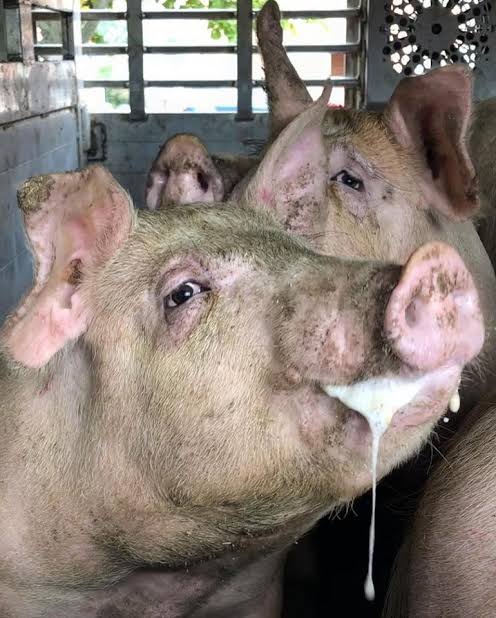10 Sick Pig Symptoms and the Steps to Take (one)
The first thing my new farmer friend asked me was what symptoms my pig was showing. As I ran through the list, he pointed out the critical signs. He warned me that missing any critical symptoms (especially if they are not caught early enough) could result in the death of my pig.
 Learn More
Learn MoreThe illness can spread to your other pigs in the herd if you don’t catch it in time and take the necessary steps to treat the disease or condition. Paying attention to your pig when they are healthy will alert you when something is off.
What should a healthy pig look like? A healthy pig should move around, have bright eyes, and eat a good amount of food. Healthy pigs look alert and take regular mud baths. They should be no discharge or mucus from its eyes or nose. A healthy pig’s temperature should be between 101.5 and 102 degrees Fahrenheit.
Now that we know what the expected behavior of a healthy pig should be, let’s take a closer look at the 10 critical symptoms of a sick pig, as well as the steps you should take to treat them:
1. Pig Walking in Circles Can Signal An Infectious Condition
It may look funny if you notice your pig walking in circles, but it is a serious condition.
Pigs walk in circles due to a middle ear infection, a brain stem infection, or a bacterial infection. If they are circling you, it may be a display of extreme aggression. Depending on the age of your pig, it’s one of three main infections: Listeriosis, Vestibular syndrome, or Actinobacillus.
The vet may inject your pig with penicillin and aminoglycosides.
Identify what caused the infection and prevent it from spreading further. A blood smear test should help in this regard.
2. My Pig is Down and Won’t Get Up—Could Be Paralysis
The motor and sensory nerves in your pig are attacked by Teschen disease. It paralyzes your pig’s hind end and, in extreme cases, can cause total paralysis.
Strangely, despite having hindlimb paralysis, your pig can still feel pinpricks and other normal sensations. Early treatment of this illness is essential because severe cases can cause irreparable harm.
Teschen disease symptoms include losing its back legs, dragging its bottom, and back paralysis. It might appear depressed and temporarily stop eating. Pigs with Teschen disease in its early stages will have wobbly gaits. They might have trouble standing.
READ ALSO 12 very important areas to look at in pig production
Steps to Take if Your Pig’s Hind Area is Paralyzed:
Pigs need antibiotics and vaccine before symptoms arise
Piglets need colostrum to immunize against Teschen disease
Sick-pig-is-down-and-wont-get-up-could-be-paralysis-DLX2-PS
3. Sick Pig Has Lethargy, A Main Sign of Swine Influenza
A lethargic pig lies down more frequently and for longer stretches of time. Additionally, your pig may appear quite pale, particularly around their gums, ears, and nose.

Paying close attention to your pig is essential because lethargy is frequently a sign of illness, such as swine influenza (a respiratory disease in pigs). Coughing, sneezing, rapid, shallow breathing, a runny nose, a fever, and loss of appetite are symptoms of swine influenza (SIV). When treating a sick pig, use caution because swine influenza can be transmitted to humans. In addition, the herd moves through it quickly.
Steps to Take if Your Pig is Lethargic:
If you suspect Swine Influenza, take precautions to keep yourself safe. Wash your hands, avoid contact with any cuts or scrapes you have. Personally, I’d even change my clothes after helping my pig.
Isolate all sick pigs
Give antibiotics to all pigs with a fever or coughing for at least three days.
Provide your pig with electrolytes
READ ALSO 12 consequences of using contaminated water in your pig farm
4. Pigs That Won’t Stand Up Is A Serious Sign Of Sickness
If your pig refuses to stand up when it’s time to eat, this is cause for concern. Your pig may be suffering from bacterial muscle infections brought on by one of the Clostridial diseases or joint pain from an injury. They consist of conditions like pulpy kidney, botulism, black disease, blackleg, tetanus, and malignant oedema.
Swollen muscles, lethargy or listlessness, red rashes, stiff legs, severe lameness, paralyzed tongues, and other muscle and functional problems are signs of clostridial diseases. Pigs may also experience blood-tinged diarrhea.
Steps to Take if Your Pig Doesn’t Want to Get Up
Test your pig for Clostridial disease through your vet
Administer Penicillin for about 3 to 4 weeks.
Anti-inflammatory drugs to reduce the swelling of the muscles.
Gentle walking promotes blood flow.
Moving your pig to a pen with sand or sawdust shaving flooring can also help exercise and loosen the muscles.















